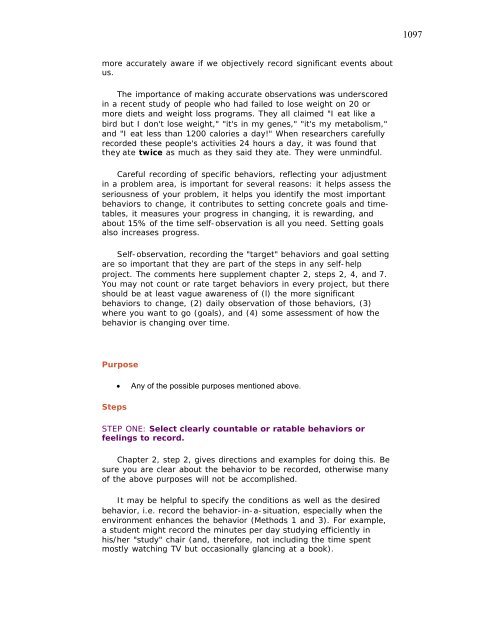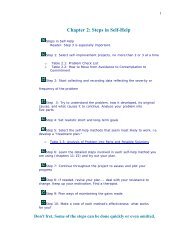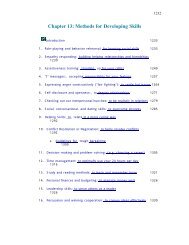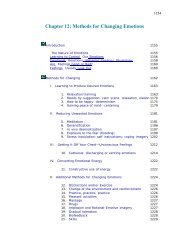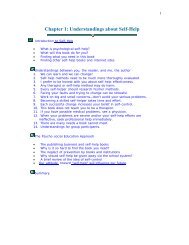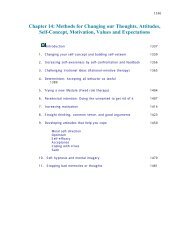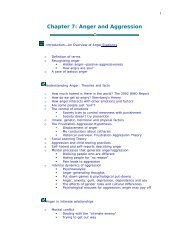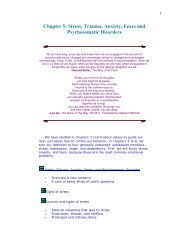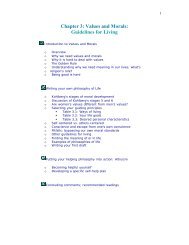Methods for Changing Behaviors - Psychological Self-Help
Methods for Changing Behaviors - Psychological Self-Help
Methods for Changing Behaviors - Psychological Self-Help
You also want an ePaper? Increase the reach of your titles
YUMPU automatically turns print PDFs into web optimized ePapers that Google loves.
more accurately aware if we objectively record significant events about<br />
us.<br />
The importance of making accurate observations was underscored<br />
in a recent study of people who had failed to lose weight on 20 or<br />
more diets and weight loss programs. They all claimed "I eat like a<br />
bird but I don't lose weight," "it's in my genes," "it's my metabolism,"<br />
and "I eat less than 1200 calories a day!" When researchers carefully<br />
recorded these people's activities 24 hours a day, it was found that<br />
they ate twice as much as they said they ate. They were unmindful.<br />
Careful recording of specific behaviors, reflecting your adjustment<br />
in a problem area, is important <strong>for</strong> several reasons: it helps assess the<br />
seriousness of your problem, it helps you identify the most important<br />
behaviors to change, it contributes to setting concrete goals and timetables,<br />
it measures your progress in changing, it is rewarding, and<br />
about 15% of the time self-observation is all you need. Setting goals<br />
also increases progress.<br />
<strong>Self</strong>-observation, recording the "target" behaviors and goal setting<br />
are so important that they are part of the steps in any self-help<br />
project. The comments here supplement chapter 2, steps 2, 4, and 7.<br />
You may not count or rate target behaviors in every project, but there<br />
should be at least vague awareness of (l) the more significant<br />
behaviors to change, (2) daily observation of those behaviors, (3)<br />
where you want to go (goals), and (4) some assessment of how the<br />
behavior is changing over time.<br />
Purpose<br />
Steps<br />
· Any of the possible purposes mentioned above.<br />
STEP ONE: Select clearly countable or ratable behaviors or<br />
feelings to record.<br />
Chapter 2, step 2, gives directions and examples <strong>for</strong> doing this. Be<br />
sure you are clear about the behavior to be recorded, otherwise many<br />
of the above purposes will not be accomplished.<br />
It may be helpful to specify the conditions as well as the desired<br />
behavior, i.e. record the behavior-in-a-situation, especially when the<br />
environment enhances the behavior (<strong>Methods</strong> 1 and 3). For example,<br />
a student might record the minutes per day studying efficiently in<br />
his/her "study" chair (and, there<strong>for</strong>e, not including the time spent<br />
mostly watching TV but occasionally glancing at a book).<br />
1097


